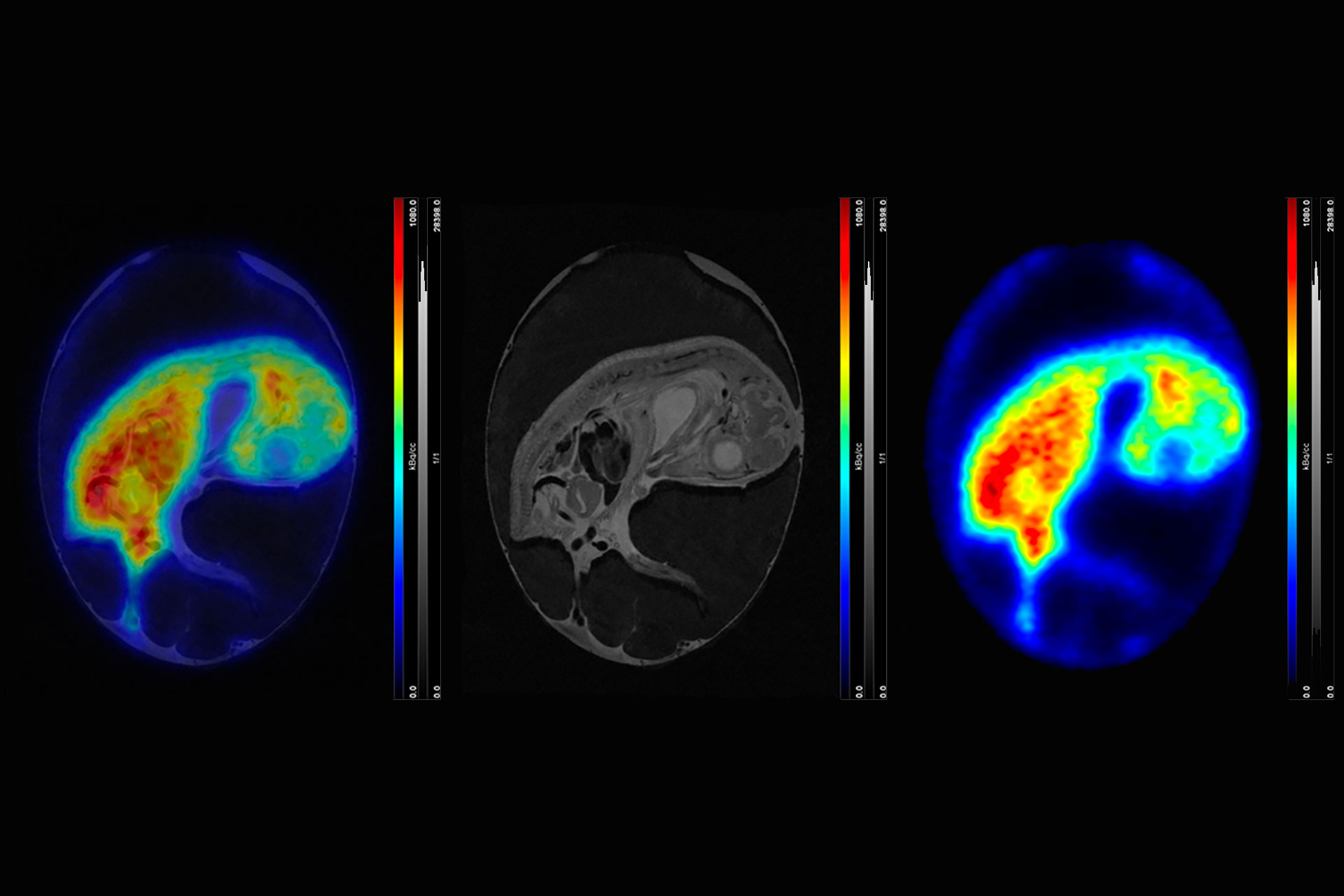Intro
Despite great progress in the development of advanced in vitro models such as co-cultures, organ-on-a-chip, and microfluidic systems, in vitro models still lack the physiological complexity of a living organism regarding blood flow, metabolism, and endogenous membrane barriers. The use of fertilized chicken eggs (in ovo model) bridges the gap between cell-based assays and rodent models, rendering this model a useful tool for the initial evaluation of new radiotracers regarding their in vivo performance. Simultaneous PET/MRI offers great potential in terms of soft tissue contrast, as it enables clear differentiation between embryonic organs and tumor tissue, thus allowing very accurate assignment of the PET signal to embryonic structures.
Webinar Overview
The chick embryo and its chorioallantoic membrane (CAM) have been used in biomedical research for centuries, leading to fundamental knowledge about the developing chick embryo and groundbreaking discoveries in cardiovascular and tumor biology. This webinar will showcase different applications of this model in preclinical imaging. The contribution of the in ovo model to the 3R principle in tracer development will be discussed. The experimental workflow, starting with the incubation and handling of fertilized chicken eggs, intravenous injections into CAM-vessels, immobilization of chick embryos, image acquisition, and quantification, will be illustrated. Challenges and potential disadvantages will be discussed, and practical advice will be given.
Thursday, 20 November 2025
4 PM CET
What to Expect
The webinar will discuss the contribution of the in ovo model to the 3Rs principle in tracer development and will provide guidance on how to perform in ovo PET/MR imaging.
Key Learning Points
- Simultaneous PET/MR of chick embryo and its chorioallantoic membrane (CAM)
- Alternative imaging platform for faster & cost-effective tracer development
- Experimental procedures, advantages & challenges
Who Should Attend
This webinar is of interest to researchers who are developing new radiotracers or contrast agents and are looking for faster and more cost-effective methods besides wanting to explore alternatives to current animal models in the context of the 3Rs.
Speaker
Dr. Theresa Balber
Department of Biomedical Imaging and Image-guided Therapy
Division of Nuclear Medicine - Medical University of Vienna, Austria
Dr. Theresa Balber is a radiopharmacist and preclinical imaging scientist. Her main research interests are the development of new radiopharmaceuticals and advanced model systems (spheroids, patient-derived tumoroids, and in vivo models) to improve cancer diagnostics and therapy. To test the biodistribution and tumor-targeting properties of newly developed compounds, she established the in ovo model as an alternative to small animals at the preclinical imaging laboratory (PIL), Medical University of Vienna, and developed the respective imaging protocols for fertilized chicken eggs using microPET/MRI. She and her team generated CAM-xenografts based on human cancer cell lines, patient-derived glioma cells, and patient-derived colorectal cancer tumoroids, and tested radiolabeled small molecules, peptides, and antibodies for their distribution within the chicken embryo and tumor accumulation in the above-mentioned xenograft models.
Inga Fricke
Director of Global Imaging Applications, Bruker BioSpin
Inga Fricke is the Director of Global Imaging Applications at Bruker. A biologist by training, she has worked in the field of multimodal preclinical imaging for over a decade. She leads Bruker’s global Imaging Application Team — an expert group dedicated to helping customers fully leverage the capabilities of their imaging instruments and advancing novel imaging applications.
